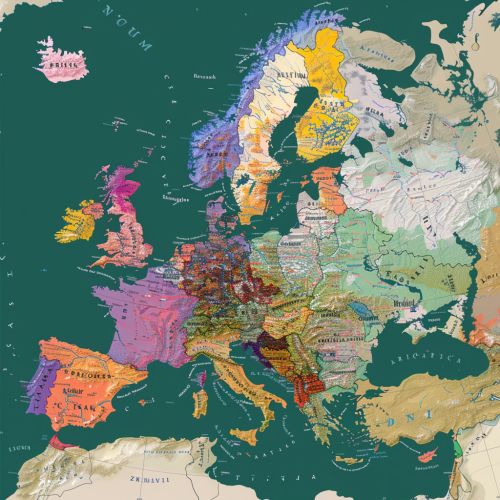Celtic Languages
Overview
The Celtic languages are a group of languages in the Indo-European language family. They are characterized by a complex grammatical structure with inflected prepositions and a system of initial consonant mutation. The Celtic languages have a rich history, with the earliest written records dating back to the 1st century AD in the form of Ogham inscriptions.

History
The history of the Celtic languages is usually divided into three periods: Old Celtic, Middle Celtic, and Modern Celtic. The Old Celtic period is characterized by the earliest attested Celtic languages, such as Lepontic, Gaulish, and Celtiberian. These languages were spoken in a wide area of Europe, from Ireland and Britain in the west to Turkey in the east.
The Middle Celtic period is marked by the transition from the Old Celtic languages to the Modern Celtic languages. This period saw significant changes in the phonology and morphology of the Celtic languages, including the loss of the case system and the development of initial consonant mutation.
The Modern Celtic period is characterized by the six surviving Celtic languages: Irish, Scottish Gaelic, Manx, Welsh, Cornish, and Breton. These languages have undergone further changes, including the loss of certain phonemes and the simplification of the verb system.
Classification
The Celtic languages are typically divided into two branches: the Goidelic (or Gaelic) branch and the Brythonic (or Brittonic) branch. The Goidelic branch includes Irish, Scottish Gaelic, and Manx, while the Brythonic branch includes Welsh, Cornish, and Breton.
The classification of the Celtic languages is based on a number of linguistic features, including the development of the Proto-Celtic phoneme *kw as either p or k, the treatment of the Proto-Celtic sequences *-ns- and *-n̥t-, and the development of the Proto-Celtic vowel *ā.
Phonology
The phonology of the Celtic languages is characterized by a number of distinctive features, including initial consonant mutation, the presence of sonorant consonants, and the use of stress on the penultimate syllable. The Celtic languages also have a complex vowel system, with a large number of vowel phonemes and a system of vowel harmony.
Morphology
The morphology of the Celtic languages is characterized by a high degree of inflection, with a complex system of noun cases, verb tenses, and adjective declensions. The Celtic languages also have a rich system of derivational morphology, with a large number of prefixes and suffixes used to form new words.
Syntax
The syntax of the Celtic languages is characterized by a verb-subject-object (VSO) word order, which is relatively rare among the world's languages. The Celtic languages also have a complex system of prepositions, which are inflected for person and number.
Sociolinguistics
The sociolinguistics of the Celtic languages is characterized by a number of factors, including language shift, language revitalization efforts, and the status of the Celtic languages as minority languages. The Celtic languages have experienced significant language shift, with many speakers shifting to English or French. However, there have also been efforts to revitalize the Celtic languages, with varying degrees of success.
